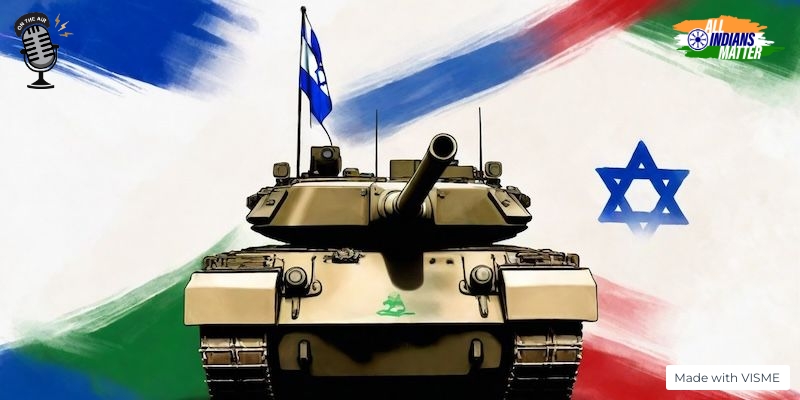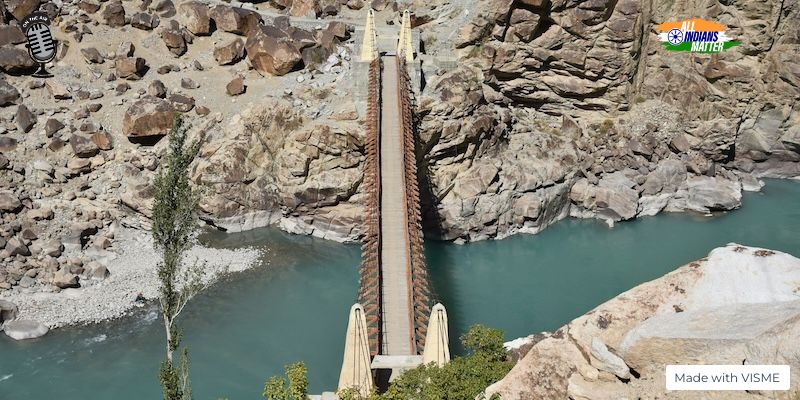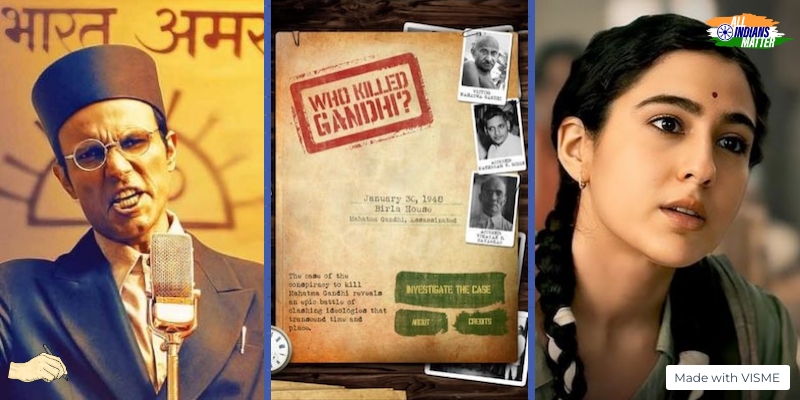Ever since Rahul Gandhi announced his intention to walk across India, from south to north, on a voyage of discovery and, more importantly, to listen to the people – the ordinary, the forgotten, the invisible – I was determined to join the Bharat Jodo Yatra. As the forces of hate attempt to tear apart the fragile fabric of our nation, an effort must be made to save it. Hate can only be countered by love, never by hate itself.
As the yatra made its way up from Kanyakumari, the narrative and visuals emerging from it were of Rahul mingling with commonfolk, embracing them and absorbing the true story of the people. After all, what is a nation but its people?
I realised that this was the beginning of change, just as after his return from South Africa and heeding his political mentor Gopal Krishna Gokhale’s advice Mahatma Gandhi travelled across the length and breadth of India. Rahul is on a similar journey of discovery.
As Bapu found the key to leadership then and a way to defeat the colonial power, Rahul is launching a campaign against hate. Bapu then and Rahul now gave the same message: “Daro Mat!” “Don’t be afraid!” The first step in vanquishing hate is to become fearless. This is the transformation India requires, and at last a leader is saying it.
The forces of hate, who rule us today, used fear to grab power and continue to sustain it with hate. Their campaign started by instilling fear in the minds of the majority with the slogan “Hindu khatre mein hai!” and justified the allegation by pointing to the fictional appeasement of Muslims – “Muslim tushtikaran”, a campaign successfully started by LK Advani. Hindus believed them and started living in fear and from it their hate for the other was born.
The weapon of fear
Every bigot has used fear to radicalise people across religions and other divisions. Recently, Union Home Minister Amit Shah, while campaigning in Gujarat for the Assembly elections, claimed that “terrorists” had a free reign in India before 2002. Then, they were dealt with by Narendra Modi and “they have learnt their lesson and since then have behaved”. Everyone knows who Shah is referring to – Muslims. This is the campaign supposedly responsible and senior ministers indulge in and unfortunately the electorate laps it up. The Election Commission and the judiciary, meanwhile, behave like the three monkeys – ears plugged, eyes blinkered and mouths shut.
The Bharat Jodo Yatra attempts to heal the fissures, which are threatening our unity and the very existence of our nation, by building bonds of trust and love.
When you wait for something to break before mending it, it means you are not interested in preventing the shattering. Those who care start mending as soon as the cracks appear. In that sense, the yatra has started a little late because the divisions have widened but it’s a welcome step. Rahul and the yatra are effectively conveying the message of love, unity and inclusiveness, thus instilling hope.
 The first hours
The first hours
When the Bharat Jodo Yatra reached Maharashtra, I was determined to join it, and I did so in Akola district at Shegaon. It was at Shegaon station where, as the 1dn Howrah Mail via Nagpur halted on January 17, 1960, I was born. So, Shegaon was the station of my birth and Akola my ‘place’ of birth. It has a sentimental attachment for me.
I reached Shegaon early on November 18, 2022. The atmosphere was electric. Groups of people were rushing to reach the starting point, to join the march, to catch Rahul’s attention and hopefully for him to beckon them to come close. Others were taking up positions on both sides of the route so that they could catch a glimpse of Rahul as he passed by and get a snapshot of that fleeting historic moment.
Then we heard a commotion; the yatra had begun and soon it would reach the spot where we waited alongside parties of musicians playing traditional instruments.
As the dawn light brightened, the yatra came into view. It seemed like a torrent rushing to engulf me and carry me along.
Gulzar Khan, who was accompanying me, and four others were hoping to enter the secure area along with me and exchange a few words with Rahul or get a photograph with him. Gulzar had a story to narrate. He lives in Dharavi and his late father Waqar Khan was socially active there. After the 1992-93 riots, he worked hard to heal the scars and reestablish bonds between communities. One of his campaigns was called ‘Hum Sab Ek Hain’. As part of it, Waqar Saab designed a poster on which four children dressed in clothes worn by priests of the major religions were featured alongside the slogan ‘Hum Sab Ek Hai’. A Hindu toddler was selected to portray the Brahmin. On the day of the shoot, his parents backed out. So, Waqar Saab got Gulzar’s head shaved and dressed him up as a brahmachari for the photograph. That poster became iconic and the ‘Hum Sab Ek Hai’ campaign a balm to heal the wounds.
Waqar Saab is no more but Gulzar is proud of his work and presents well-known persons with a photograph of the poster and narrates his story. He wanted to tell the story to Rahul and present him with a photo of the poster too. He was overjoyed when Rahul gave him his trademark hug and heard the tale with interest.
All those accompanying me got their moments with Rahul, and they were all thrilled. Then Rahul grabbed my hand and told me to walk with him. I told him he walks fast and I may not be able to keep pace with him. He promised to ensure I wasn’t left behind, and he did that all morning.
We started talking of the close bonds between both our ancestors. I told him how his great great grandfather, Motilalji, had asked Bapu to visit Anand Bhavan and drill some sense into his son who he feared was losing his way. Motilalji hoped Bapu would influence young Jawaharlal, who was then much influenced by European radicals and militant socialists. Bapu met Jawaharlal and the rest is history.
Then I told Rahul the story of my birth. He was amused and asked if due to my birth I had become an obsessive traveller. I told him that I could not be called obsessive, but I do have a tremendous affinity for travel. He said he believed that the circumstances of one’s birth have an influence on what one becomes.
A torrent of stories
There was constant demand for Rahul’s attention, and he has cultivated the habit of keeping an eagle eye on his surroundings. So, even though we were talking, he was aware of the goings on around him and would frequently point to someone and ask for them to meet him. At one point, a panicky stray dog ran straight towards Rahul. His security was flustered but Rahul immediately asked them to treat it gently. He ensured the dog made its way out of the crowd and calmed down unmolested and unhurt. He was as caring towards the people.
And so we kept talking and marching. He had questions about Bapu’s early years, why he went to London to study law, why he went to South Africa… He wanted to know the fate of the Phoenix Settlement established there by Bapu and managed by my grandparents, Manilal and Sushila.
At one point, a bunch of young women tried desperately to get close to Rahul but couldn’t manage. Someone told Rahul that the group comprised wives and daughters of manual scavengers, cleaners who had died cleaning choked sewers by descending into them. Rahul was very moved and immediately met the group. He gave each one of them a hug, wiped their tears and patiently listened to them with compassion. He had no promises to make, but he made them feel that he sincerely cared for them and would ensure that their suffering was reduced when he was in a position to offer more than mere sympathy. For the women, that was reassuring.
About an hour and half into the march, we halted for refreshments. Although the cordoned off area was packed with VIPs, Rahul ensured I stayed close. While we were resting, we saw a physically challenged man plodding towards Rahul. As he came closer, we could see that he had lost both his legs and was walking on crudely fashioned stumps. And, from the partial uniform he wore and the medals on his chest, that he was a military veteran. Rahul rushed to him and escorted the former havaldar to a chair. The former soldier was from Haryana, had served meritoriously in many operations and was decorated for his services. He was part of Operation Vijay in Kargil, and it was there that he was grievously injured when a shell he was loading exploded. He lost his right hand and his chest was ripped open. He was rushed to hospital, but his chances of survival were negligible. As a desperate measure, his mangled legs were amputated just above the knee. He narrated it as if it was an insignificant injury suffered in a minor incident. He did not inform his wife of the amputations for three months.
His determination not to waste away as a cripple was remarkable and iron resolve helped him overcome the tragedy. His response to fate was: “Humne jo naukri ki, uss meing aisa ho sakta hai yeh toh maaloom hi tha. Kai saathiyon ki toh jaan chali gayi; hum toh zinda rahein.” There was no bitterness, just the determination to live life as fully as when he was physically complete. He was smiling and cheerful the entire time.
Then he told Rahul that he wished to walk with him. Rahul walked with the former soldier by his side, the pride and joy on the havaldar’s face indescribable. Rahul told a party leader from Haryana to help get modern and more efficient prosthetics for the soldier.
There were many such stories, but what was remarkable was Rahul noticing them and responding. It was uncanny how he was able to identify the ones that really required him to intervene. In between, he carried on the conversation he was having with me, picking up the thread from where he had left off.
Finger on the pulse
Initially, I told Rahul I was determined to walk the entire stretch of that phase but wasn’t sure if I could keep up with him. But I managed and, when I faltered, he ensured I was able to catch up.
Towards the end it was getting hot and after 12 km I was dehydrated and flushed. Rahul noticed and personally mixed rehydrating powder into a bottle of water and told me to keep sipping it. I was touched.
After marching more than 13 km, we reached the designated halt for the morning. That’s where I parted company with Rahul. He told me to drink lots of water and get enough rest, and then he was taken to the display of traditional folk music and dance and finally to his secure camp.
I spent the afternoon mingling with other yatris, those selected to walk the entire route, and those who had joined for a day or two like me. There was lunch. That day, the late afternoon march would not take place since a large public meeting was organised in Shegaon. At around 4 pm, we followed Rahul in a motorcade to the shrine of Gajanan Maharaj, where he was accorded a ceremonious welcome and took darshan of the deity. Then we all proceeded to the meeting venue, where to my surprise I was made to sit in the front row on stage and requested to speak. Although I have spoken at major events, this was a unique experience. Just before Rahul spoke, there was a spectacular display of fireworks.
The massive crowd hung on to every word and was ecstatic when Rahul paid glowing homage to the mother of Chhatrapati Shivaji, Mata Jijau.
Rahul understands the pulse of the people and has mastered the art of defusing the vicious attacks Sanghis frequently carry out as part of their malicious campaign against him.
Whether the Bharat Jodo Yatra will be able to change the electoral fortunes of the Congress will depend on how well the party strategises to encash the goodwill. What is certain is that Rahul is forging a very strong bond with the people of India, the poor, the downtrodden and the forgotten multitudes. The hatemongers will find this bond difficult to break.
Change could begin thus. I am hopeful.
Tushar Gandhi, great grandson of the Mahatma, is an activist, author and president of the Mahatma Gandhi Foundation. Reach him here: gandhitushar.a@gmail.com.






